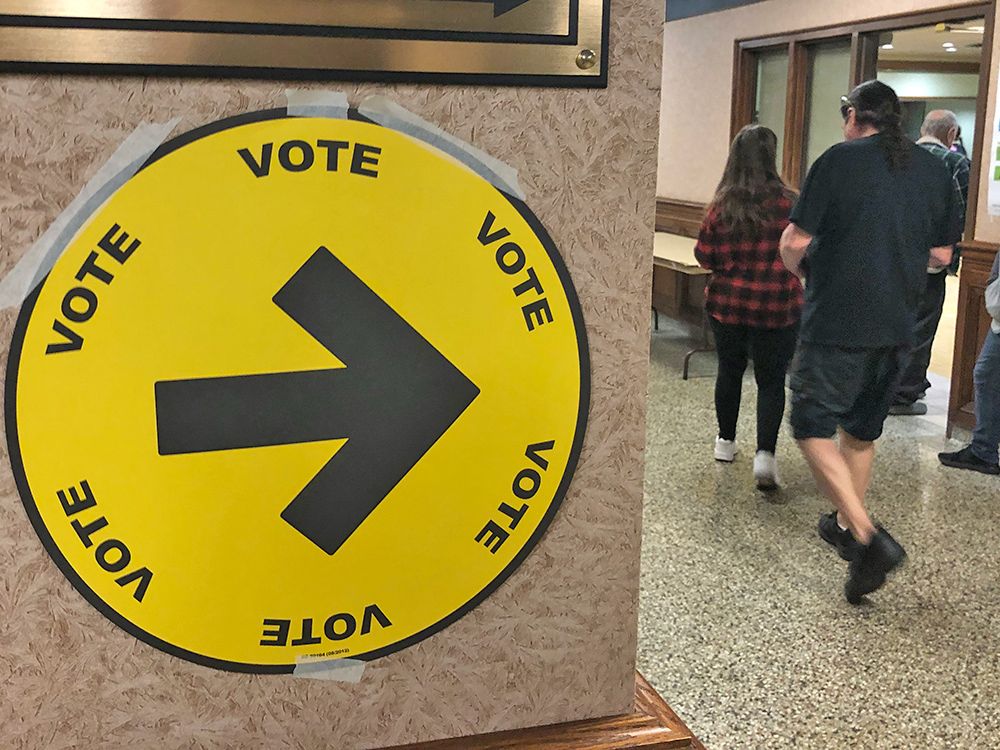OTTAWA — With millions of Canadians having already cast a ballot in advance polls, political parties are now crisscrossing the country with a final pitch to those yet to vote.
Liberal Leader Mark Carney made stops in Price Edward Island, Nova Scotia and New Brunswick on Monday and is expected to make his way across the country in the next few days calling for a “strong” Liberal mandate on April 28.
“We’re in the most serious crisis of our lifetimes, and we need a government that has a strong mandate, a clear mandate,” he told reporters in Charlottetown.
Carney said Canada’s next prime minister will be sitting down with U.S. President Donald Trump to negotiate a new economic and security relationship immediately after the election, and insisted he is the best placed to deal with him.
“It’s a choice to go with a plan, to go with someone who knows how to negotiate, to go with someone who knows how to manage a crisis,” he said. “Do we send someone who has the backing of the Canadian people? That’s the choice in the election.”
Conservative Leader Pierre Poilievre, for his part, is planning to spend the next few days in the rich-vote Greater Toronto Area to hammer the need for a change in government.
“Einstein said the definition of insanity is doing the same thing over and over again and expecting a different result,” he said in Ajax on Monday. “You won’t get a different result unless you do something different. We need to elect a new Conservative government.”
Millions of Canadians already made their choice over the Easter long weekend.
Elections Canada said more than two million voters voted in advance polls on Friday alone. The agency will be releasing updated numbers Tuesday, but spokesperson Richard Théoret is expecting the agency will observe a “record turnout” from the weekend’s vote.
Philippe J. Fournier, creator of the polling aggregator website 338Canada, said that while big turnouts in advanced polling might typically signify a desire for change, it is less clear in this election whether Carney or Poilievre would best represent that sentiment.
“Clearly, many Canadians see Mr. Carney as a change — rightly or wrongly,” he said.
Fournier said most polling numbers that came out Monday are putting the Liberals six to eight points ahead of the Conservatives, with an even wider gap between both parties in Ontario.
That means, he said, that Liberals are almost guaranteed to form government.
Whether Liberals can aspire to form a majority government, he added, will depend on if they can win enough seats in Ontario, British Columbia and Quebec. The battlegrounds in those provinces are where parties will want to squeeze out the thinnest of wins.
In recent days, Bloc Québécois Leader Yves-François Blanchet has been pitching to Quebecers the necessity of holding the Liberals to a minority — something he took credit for in the 2019 and 2021 elections — with the Bloc holding the balance of power.
Blanchet said Carney gave him his personal number after the debates and said he was “reasonably optimistic” that he would be able to collaborate with Carney in government.
Blanchet is expected to travel across the province in the final stretch of the campaign and is fighting to keep the party’s seats in the Quebec City area, where the Bloc is competing with the Conservatives, and in the Montreal suburbs, where the Liberals are their competition.
“To get to the magic number of 172, the Liberals need Quebec. So, if the Bloc continues to rise … the Liberals’ majority could be compromised,” said Fournier.
For his part, NDP Leader Jagmeet Singh spent the long weekend campaigning in British Columbia — more specifically in the Lower Mainland and Vancouver Island — where he and half of his caucus are at risk of losing their seats to the Conservatives or the Liberals.
At a campaign event in Nanaimo, Singh attempted to show that only the orange team is able to beat the blue team. “Who beats Conservatives on Vancouver Island?” he asked.
“The NDP!” chanted the crowd.
Singh echoed Blanchet’s argument that voters can vote NDP while having a Liberal government.
“In this election, we want folks to know something that we’ve always known for a long time now: that Canada works best when one party doesn’t hold all the power.”
The NDP leader is expected to make stops across the country in the next few days, visiting mostly incumbent seats in an attempt to give them a boost before election day.
But he might have to end up going back west to save his caucus — and even his own seat.
“He has to spend a lot of time there to save the furniture,” said Fournier.
National Post
calevesque@postmedia.com
Get more deep-dive National Post political coverage and analysis in your inbox with the Political Hack newsletter, where Ottawa bureau chief Stuart Thomson and political analyst Tasha Kheiriddin get at what’s really going on behind the scenes on Parliament Hill every Wednesday and Friday, exclusively for subscribers. Sign up here.
Our website is the place for the latest breaking news, exclusive scoops, longreads and provocative commentary. Please bookmark nationalpost.com and sign up for our newsletters here.







